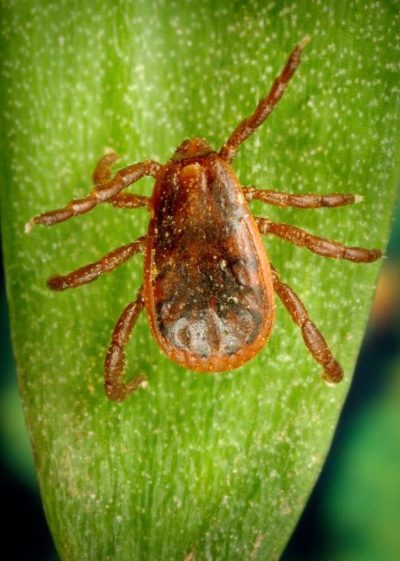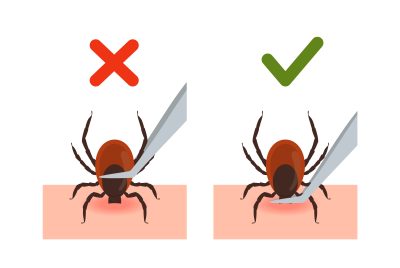
ST. GEORGE — Rainy weather and cooler days could be a boon for hungry ticks, leading to more activity and bites. But some Southern Utahns may be wondering why there are ticks in the first place.
Southern Utah’s tick activity ramps up in mid-to-late spring and summer, fizzing out as the days grow hotter and dryer. However, the Utah State University Extension office states these bloodthirsty parasites are more active during monsoon season and into fall.
While there are potentially over a dozen native species in the area, most are harmless to humans, said Samual Wells, an assistant professor in Southern Utah University’s biology department.
People and animals in Utah are most likely to encounter the Rocky Mountain wood tick, the extension office writes. Other Utah species include brown dog ticks, winter fern ticks and western black-legged ticks. While less common, black-legged ticks can transmit Lyme disease but “are not known to do so in Utah.”
“They really are fascinating creatures,” Wells said. “If you look at them closely under the microscope, they’re pretty remarkable creatures.”
Despite their reputation for “bugging” the locals, ticks are more closely related to spiders. While their parasitic nature is responsible for their bad reputation, Wells said they play an essential ecological role in their environment, such as controlling rodent populations.

“Rats play an important role in recycling things and stuff like that — we don’t like them in our neighborhoods — but imagine a world where rats were able to breed indiscriminately,” he said. “If rats or mice could reproduce to their maximum potential — which means have a batch of babies several times a year — it wouldn’t take too many years before the Earth would be completely overrun several dozens of feet high with rats and mice.”
This doesn’t occur due to forces that limit their procreation, like predators, disease and parasites that spread disease, like ticks, Wells said. With their populations at a sustainable level, the habitat can continue providing for “other species that need to live there.”
Additionally, rodents that can avoid ticks have an advantage over those that can’t, allowing them to pass on healthier genes, while those who become sick or die more easily are eliminated, Wells said. The parasites serve as a food source for various animals, such as birds.
“That sounds like a harsh world,” he added. “That’s the nature of the natural world we live in.”
How common are ticks?
“They’re not uncommon if you know how to go looking for them,” Wells said.

However, people shouldn’t be afraid to get outdoors, as it’s still unlikely they’ll be bitten as Southern Utah’s ticks did not evolve to feed on humans and prefer other hosts, he said.
The most likely places people will pick up a tick is while walking through tall grass or shrubbery. The parasites are typically found on the ground or in vegetation up to 3 feet high at the edges of fields and woodlands, according to the Utah State University Extension office.
In rare cases, a tick may dislodge from a previous host on a leaf or another, higher location and could lay its eggs there, but generally, ticks seek lower vegetation as that’s where their hosts are, Wells said.
“They’ll be out, ready to jump onto their host at any time of the day or night,” he said. “If they’re in need of food, they can be very, very patient — they can wait for days until the right opportunity comes by.”
Ticks cling to plants, with their legs extended and ready to attach to a passing host in a behavior called “questing,” the university states. They can sense a suitable host through scent, touch and other stimuli.
Once on a host, the arachnids use their “scissor-like mouthparts” to cut open skin, insert their barbed strawlike mouthparts and secrete a numbing agent via their saliva, the university writes. The bites are typically painless. Then, the critter produces a cement-like substance to anchor itself, making it difficult to remove.
This process can take about one to two days, after which the tick begins to feed for an additional two to three days for larvae or two weeks for adult females. As they feed, they become engorged and can increase their weight by over 100 times. According to the university, this is when their hosts are most likely to catch a disease.
Are tick bites dangerous?

Lyme disease is less common in Utah than in other states, and Wells said many cases are along the Interstate 15 corridor, where people are passing through or returning from vacation. Locals are more likely to catch Rocky Mountain spotted fever and Colorado tick fever.
According to the university, Rocky Mountain wood ticks, brown dog ticks and winter fern ticks spread Rocky Mountain spotted fever, characterized by sudden chills and fever, headache, bloodshot eyes and blood leaking from capillaries across a person’s body.
Colorado tick fever is spread by wood ticks and symptoms include intermittent fever, headache, muscle aches and leukopenia — when a person’s white blood cell count is lower than normal.
Wells said it’s important to remember that the likelihood of becoming infected even if bitten isn’t high, particularly if the tick is found and removed early. Additionally, many homespun remedies are a “waste of time.”
“I think too many people, they see a tick, and they freak out,” he said. “They’re paranoid that they’re gonna die, and then they go to all these extreme measures to get rid of the tick and et cetera, et cetera. The best thing to do, and I’ve had over a hundred tick bits in my life because I’m a field biologist — I get outside a lot. … grab them very strongly between your fingers and yank them out.”
The university recommends using tweezers to grasp the tick as close to the skin as possible and pulling it in a straight upward direction while avoiding twisting or crushing it, as this could cause it to regurgitate its stomach contents and transmit a pathogen. For a smaller tick, individuals can use knives or credit card edges to scrape it out while being careful not to cut themselves.

“If the head accidentally breaks off and remains in your skin, clean the area around the bite and use a sterile needle to lift or scrape the head from the skin carefully,” the university writes. “Wash the wound and your hands with soap and water after removal. Apply an over-the-counter antibiotic ointment to help reduce the chance of catching a tick-borne disease or secondary infection.”
Once the tick is removed, people should save the specimen in rubbing alcohol as it can help identify the species if they develop symptoms. Those who become sick should let their doctor know where and when they were bitten by a tick, as detecting the disease early can be helpful in treatment and recovery, the university states.
How can Southern Utahns prevent tick bites?

To prevent tick bites, Wells suggests wearing long pants. Individuals can tuck their pant legs into socks or wrap a hair tie around the bottoms to make it more difficult for ticks to access the inside of their clothing.
Other prevention tips include avoiding grassy, wooded or shrubby areas, especially from spring to midsummer, and applying tick repellent to clothing. Wells warns that DEET, a popular tick repellent can dissolve shoes.
After spending time in tick habitat, Southern Utans should check for ticks, searching armpits, waistlines, belly buttons, scalps and crotch areas.
Finding them early is essential to preventing disease transmission, which typically occurs 12-24 hours after the parasites begin feeding. The university also suggests wearing light-colored clothes to detect tiny trespassers more easily.
Copyright St. George News, SaintGeorgeUtah.com LLC, 2023, all rights reserved.